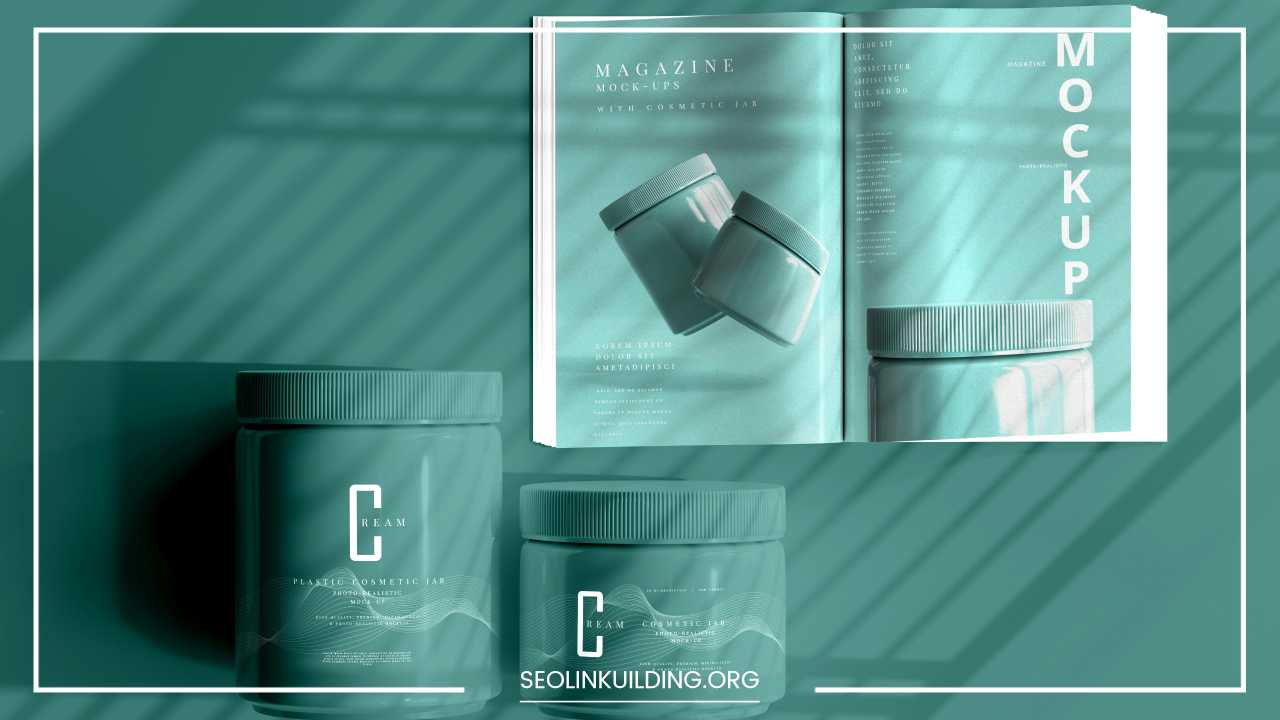Business Branding: Stand Out From the Crowd

Business Branding
The Definitive Guide to Business Branding: Standing Out in a Crowded Marketplace
In today’s hyper-competitive business landscape, a simply good product or service is table stakes. What truly separates the winners from the also-rans is a powerful brand.
A strong brand transcends logos and slogans; it’s the very soul of your company, encompassing its values, mission, and the unique promise it delivers to customers.
This comprehensive guide delves deep into the world of business branding, equipping you with the knowledge and tools to craft a brand that resonates with your target audience and propels your business towards long-term success.
Understanding the Pillars of Business Branding
Business branding is the strategic process of creating a distinct and memorable identity for your company. It’s about shaping how your target market perceives your brand and fostering positive associations with your products or services. Branding encompasses all the elements that contribute to this perception, forming a cohesive whole:
- Brand Identity: This is the visual representation of your brand, including your logo, color scheme, typography, and packaging. It’s the first impression you make, so it needs to be memorable, visually appealing, and aligned with your brand personality.
- Brand Voice & Personality: Imagine your brand as a person. How would it communicate with its audience? Is it friendly and approachable, or sophisticated and authoritative? Defining your brand voice ensures consistent communication that resonates with your target market.
- Brand Values: These are the core principles that guide your company’s actions and decision-making. They should be genuine, transparently communicated, and reflected in everything you do, from your company culture to your customer interactions.
- Brand Story: Every brand has a narrative to tell. This story should articulate your company’s origin, mission, and what makes it unique. It should be emotionally compelling and connect with your target audience on a deeper level, humanizing your brand and fostering trust.
- Customer Experience: This encompasses all the interactions a customer has with your brand, from the moment they discover it through their post-purchase journey. Every touchpoint is an opportunity to reinforce your brand promise and build stronger customer relationships.
The Benefits of a Powerful Business Brand
Investing in strong business branding yields a multitude of benefits for your company, creating a ripple effect that impacts everything from customer loyalty to employee morale:
- Customer Loyalty: A well-defined brand fosters trust and emotional connections with customers, leading to increased brand loyalty and repeat business. Customers become advocates for your brand, organically promoting it through word-of-mouth marketing.
- Competitive Advantage: A strong brand differentiates you from competitors, making it easier to attract and retain customers in a crowded marketplace. It positions you as a trusted authority in your industry, allowing you to command higher prices and secure more favorable partnerships.
- Increased Brand Awareness: Effective branding helps you establish a recognizable presence in your industry, making it easier for potential customers to discover your business. Strategic use of branding elements across various marketing channels builds brand recognition and recall.
- Premium Pricing Power: A strong brand allows you to command a premium price for your products or services as customers associate your brand with quality, value, and a superior experience. They’re willing to pay more because they believe your brand delivers something unique.
- Attract & Retain Top Talent: A compelling brand attracts talented employees who are passionate about your company’s mission and values. A strong employer brand not only streamlines the recruitment process but also fosters a positive company culture that reduces turnover and boosts employee morale.
Building a Powerful Brand: A Step-by-Step Guide
Building a brand that resonates requires a strategic approach. Here’s a comprehensive guide to navigate the process:
- Unearth Your Target Audience:
The foundation of any branding strategy starts with a deep understanding of your ideal customer. Conduct thorough market research to identify their demographics, interests, needs, and pain points.
Go beyond basic demographics and delve into their psychographics – their values, aspirations, and what motivates them.
Actionable Tip: Create detailed buyer personas that represent your ideal customer segments. These personas will guide your brand decisions and ensure your brand speaks directly to their needs and desires.
- Craft Your Brand Story:
Every brand has a story to tell. This story should articulate your company’s origin, mission, and what sets you apart. It should be emotionally compelling and connect with your target audience on a deeper level.
Actionable Tip: Consider the “why” behind your brand. Why did you start this company? What problem are you solving? Weaving this purpose and passion into your brand story creates authenticity and resonates with customers who share your values.
- Develop Your Brand Values:
What are the core principles that guide your business? Identify your brand values and ensure they are reflected in everything you do, from your company culture to your customer interactions. Here are some steps to develop your brand values:
- Brainstorm: Gather your team for a brainstorming session to identify core values that resonate with everyone.
- Prioritize: Once you have a list of potential values, prioritize them based on their importance to your company and how well they align with your mission.
- Refine & Communicate: Refine your chosen values to ensure they are clear, concise, and actionable. Clearly communicate these values to your entire team so everyone understands the guiding principles behind your brand.
4. Define Your Brand Voice & Personality:
How will your brand communicate with its audience? Develop a consistent voice and personality that aligns with your brand values and resonates with your target market. Here are some ways to define your brand voice:
- Identify Archetypes: Consider brand archetypes like “The Outlaw” (think Harley Davidson) or “The Caregiver” (think Johnson & Johnson) to define your brand personality.
- Consider Tone & Language: Will your brand voice be formal or informal? Humorous or serious? Define the overall tone and language you’ll use in your communication.
- Develop Messaging Pillars: Establish key messaging pillars that capture the essence of your brand and guide your communication across all channels.
5. Create Your Brand Identity:
This is where the visual elements of your brand come into play. Design a logo, color scheme, and typography that are memorable, visually appealing, and reflect your brand personality.
Consistency is key here; ensure these elements are used cohesively across all your marketing materials, website, and social media platforms.
Actionable Tip: Invest in professional logo design. Your logo is the cornerstone of your brand identity, so it’s worth getting it right. A well-designed logo is memorable, versatile, and can be used effectively across various applications.
6. Develop Your Brand Guidelines:
Create a brand style guide that outlines the proper use of your logo, colors, fonts, and messaging. This ensures consistency across all touchpoints and protects your brand identity.
Here are some additional elements to consider including in your brand guidelines:
- Brand Imagery: Define the types of imagery that best represent your brand and how they should be used.
- Do’s and Don’ts: Outline specific examples of how your brand elements should and shouldn’t be used to maintain consistency.
- Brand Voice Examples: Provide concrete examples of how your brand voice should be used in different contexts, such as social media posts or marketing copy.
7. Integrate Your Brand Across All Channels:
Your brand should be a cohesive experience across all customer touchpoints. This includes your website, social media platforms, marketing materials, packaging, and even customer service interactions.
Here are some tips for brand integration:
- Develop an Omnichannel Marketing Strategy: Ensure your brand message is consistent across all marketing channels, both online and offline.
- Empower Your Employees: Train your employees to understand and embody your brand values, ensuring they deliver a consistent brand experience in all customer interactions.
- Monitor and Adapt: Regularly monitor your brand presence across various channels and adapt your strategy as needed.
Maintaining and Growing Your Brand
Building a strong brand is just the beginning. Here are some crucial tips for maintaining and growing your brand over time:
- Be Consistent: Consistency is key to building brand recognition. Ensure your brand identity is used consistently across all platforms, from your website to your social media profiles to your packaging.
- Deliver on Your Promises: Your brand is a promise to your customers. Ensure you deliver on that promise by providing high-quality products or services and exceptional customer experiences. A disconnect between your brand promise and reality can damage your brand reputation.
- Embrace Customer Feedback: Pay attention to customer feedback and use it to refine your brand. Are there areas where your brand experience can be improved? Customer feedback can be a valuable source of insights for brand evolution.
- Stay Relevant: The marketplace is constantly evolving. Be willing to adapt your brand to stay relevant to your target audience and industry trends. However, avoid drastic changes that could alienate your existing customer base.
- Measure Your Results: Track key brand metrics such as brand awareness, brand loyalty, and customer satisfaction. This data will help you assess the effectiveness of your branding efforts and identify areas for improvement.
Final Word: Building a Brand that Lasts
Building a strong brand is an ongoing process. By following the steps outlined above, you can create a brand that resonates with your target audience, differentiates you
from the competition, and propels your business towards long-term success. Here are some additional thoughts to consider as you build your brand:
Embrace Authenticity: Consumers today crave authenticity. Don’t try to be something you’re not. Let your brand’s unique personality shine through and connect with your audience on a genuine level.
Embrace Authenticity: Consumers today crave authenticity. Don’t try to be something you’re not. Let your brand’s unique personality shine through and connect with your audience on a genuine level.
The Power of Storytelling: Storytelling is a powerful tool for building brand engagement. Weave stories into your marketing materials, social media content, and customer interactions. Stories can evoke emotions, build trust, and make your brand more memorable.
The Human Touch: In today’s digital age, the human touch is more important than ever. Personalize your brand interactions, show appreciation for your customers, and build relationships that go beyond transactions.
Embrace Social Responsibility Consumers are increasingly making purchasing decisions based on a company’s social and environmental values. Align your brand with a cause you care about and actively participate in social responsibility initiatives. This can enhance your brand image and attract customers who share your values.
Building Brand Advocacy: Empower your customers to become brand advocates. Create a brand experience that inspires customer loyalty and encourages them to spread the word about your brand through positive word-of-mouth marketing and online reviews.
Remember, your brand is a living, breathing entity that should evolve alongside your business. By consistently delivering on your brand promise, fostering genuine connections with your customers, and adapting to the ever-changing marketplace, you can build a brand that stands the test of time.
I hope this comprehensive guide empowers you to create a powerful brand that propels your business towards success!













